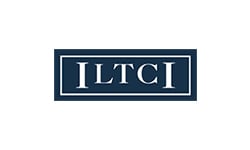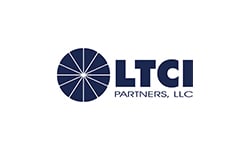At the start of 2019, the OneAmerica® forecast on these pages was one of optimism, even though several factors—market uncertainty and the regulatory landscape among them—could bring headwinds to our industry.
Halfway through the year, our tone hasn’t changed. Especially for the asset-based long term care (ABLTC) market, what we’re seeing is “more of a good thing.”
Specifically, more people are seeing the value of ABLTC to help protect their financial goals, more producers are embracing the guarantees that ABLTC can offer their clients, and carriers are finding more opportunities to continue improving their products and services.
Driving the success in the market is a growing number of people who want and need a way to protect their financial future from the possibility of long term care costs down the road. With care costs continuing to rise, and the rising incidence of long term, degenerative conditions like Alzheimer’s Disease driving demand for care, the need for long term care protection isn’t going anywhere for a long time.
“As the Baby Boomers continue to transition into retirement, many are taking a second look at insuring long term care risk with asset-based policies,” said Brian Ott, a financial professional at Bellevue, WA-based 525 Advisers. “Having the ability to protect their savings and family members, while at the same time knowing their money isn’t wasted on premiums if they don’t need care, is very attractive to the Boomer generation.”
Financial professionals like Ott are gaining a better understanding of how long term care costs can wreak havoc on even the most solid retirement strategy. If assets have to be tapped for care costs, that can cause assets to be depleted much faster than anticipated. Along with guaranteed benefits, ABLTC protection also offers guaranteed premiums—another plus in an environment where clients may be reading about premium increases to stand-alone products.
Changing face of retirement driving demand
By now, those of us in the financial services business are well aware that the U.S. population is graying and will continue to do so for the next several decades. By 2020, nearly 140 million people will be 45+, up from an estimated 133.5 million in 2016. [1]
That trend will continue to provide opportunities for well-designed, thoughtful strategies to not only help people accumulate assets, but also to protect those assets from being unexpectedly depleted because of long term care expenses.
But we expect retirement to look different for these workers than for older generations. For starters, those working today demand more flexibility. About seven percent of workers—10 million people—are independent contractors according to the Bureau of Labor Statistics. [2]
Millions more have temporary, on-call or other alternative work arrangements. For them, tapping into an employer-sponsored retirement or pension plan and sailing off into the sunset with a gold watch may not be the retirement they envision. Just as people’s work lives are becoming more flexible, so, too, will their retirement.
“Many of my clients are working longer, planning on living longer in retirement, and see the advantages of protecting their future with a long term care policy,” says Ott, who specializes in ABLTC protection and sees the demand growing—driven by the flexibility it provides. “Many of my clients are comforted with the knowledge that, if they absolutely have to, they can access the value in the policy in the future if they need the funds for another reason,” he says.
ABLTC protection can appeal to those who want flexibility in their financial portfolio as well. By definition ABLTC policies offer two types of protection in one—help with long term care costs if they are needed, potentially for a lifetime, or life insurance or the guaranteed income of an annuity if long term care benefits aren’t exhausted.
Additionally, ABLTC offers other types of flexibility that make it attractive. Premium options can include a single payment, or payments spread over five, 10, 15 or 20 premiums. Some offerings even have a continuous-pay option. ABLTC benefits, too, offer increasing flexibility. In addition to choosing a life insurance or annuity base, clients can choose continuation of benefits beyond the initial policy. Some even offer the option of life time benefits, which is especially attractive for protecting assets in the case of long term illnesses like Alzheimer’s Disease which can affect people for eight to 10 years or more after a diagnosis.
Carriers offering updated ABLTC products
Because of the 2017 Commissioners Standard Ordinary (CSO) mortality table updates, insurers are in the process of updating their products to comply with the table before the January 1, 2020, deadline. Of course updating products for any reason is no small undertaking, so most carriers are taking the opportunity to make other enhancements as well. In some cases the product changes are minor—changing the number of premium options or tweaking benefit levels.
Other carriers are making more substantial changes to their ABLTC options, perhaps eliminating or adding a new type entirely. Overall most carriers are streamlining options, which is a positive for financial professionals and their clients alike who may find it easier to compare options and understand differences—ultimately helping people choose the best fit for their particular goals.
“Many of the carriers have worked hard to improve software to make illustrations more consumer-friendly,” says Ott. “This has been a big advantage when showing prospects the various benefits, including the future long term care benefits and return of premium that the new plans offer.” As with the industry in general, carriers are focusing on improvements to technology for advisors and policy holders—from pre-application through claims.
Because of the fundamental differences between stand-alone and ABLTC protection, many policyholders may find themselves pleasantly surprised when they need to access their long term care benefits. Some carriers are going the extra mile to deliver a concierge-level experience in claims, knowing that a satisfied customer can be a powerful sales person.
On the distribution side ABLTC products continue to be best considered and delivered with the assistance of a trusted financial professional in the context of the client’s overall goals and financial strategy. With so many benefits and premium options to choose from, financial professionals would do well to talk to clients about the protection that ABLTC options can offer.
OneAmerica® is the marketing name for the companies of OneAmerica. 525 Advisers is not an affiliate of the companies of OneAmerica.
References:
1. “Demographic Turning Points for the United States: Population Projections for 2020 to 2060,” U.S. Census Bureau, accessed June 13, 2019 at https://www.census.gov/content/dam/Census/library/publications/2018/demo/P25_1144.pdf.
2. “Contingent and Alternative Employment Arrangements—May 2017,” Bureau of Labor Statistics, accessed June 13, 2019 at https://www.bls.gov/news.release/pdf/conemp.pdf. Reprinted from BROKER WORLD
July 2019
Used with permission from Insurance Publications Subscriptions $6/yr. 1-800-762-3387
www.brokerworldmag.com















-CMYK.png?width=250&name=LifeSecureLogo(F)-CMYK.png)



.png?width=860&height=245&name=Full%20Color%20Krause%20Group%20Horizontal%20(002).png)


